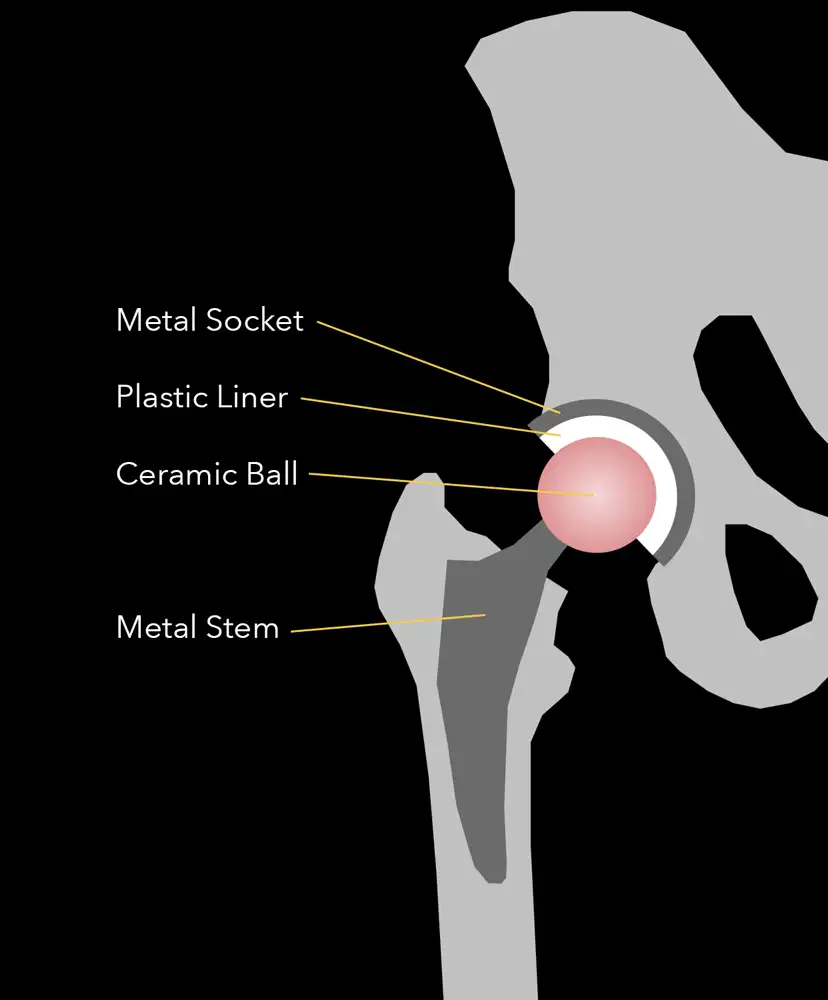
Hip replacement is a predictable and reliable operation to relieve the symptoms of hip arthritis. It is one of the most successful surgical procedures in medicine and was called a miracle of modern medicine by a leading medical journal 50 years after its introduction.
During this procedure, the damaged bone and cartilage of the hip is removed and replaced with prosthetic implants.
The deteriorated femoral head is removed and replaced with a metal stem. This stem is “press fit” or cemented into the center of the femur (thigh) bone. On the upper portion of the metal stem, a ceramic ball is placed.
This ball acts as the new femoral head. To replace the socket (acetabulum), the damaged cartilage is removed and a metal socket is placed.
Sometimes, screws are used to secure the socket. A dense plastic liner is placed between the new socket and ball, allowing for smooth movement of the new joint.
Anterior Approach Hip Replacement
The anterior approach for hip replacement is minimally invasive technique that can make the early recovery after surgery better. This is because the anterior approach is a "muscle sparing" approach to the hip. During an anterior approach, Dr. Maratt makes a small incision near the front of the hip and works between muscles to access the joint without damaging any muscles or tendons.
In contrast, traditional approaches to hip replacement like the posterior approach, even when performed though a small incision, requires splitting apart the gluteus maximus - the largest muscle in your body.
Contents Risks of Joint Replacement